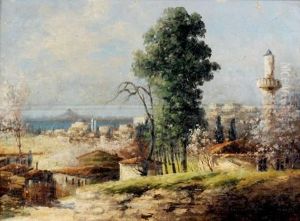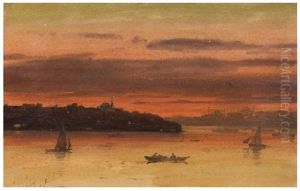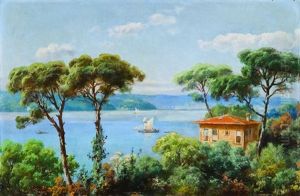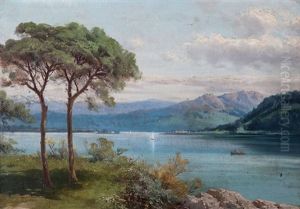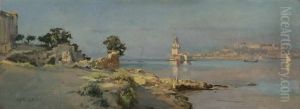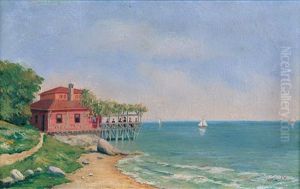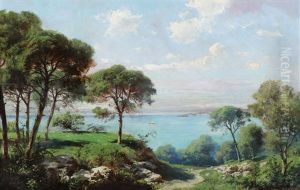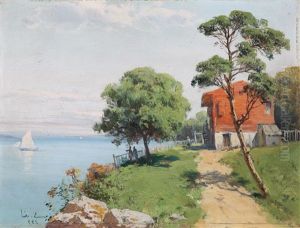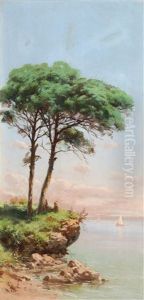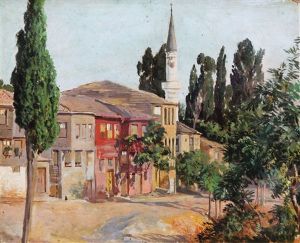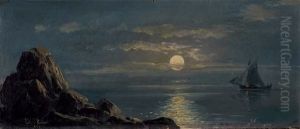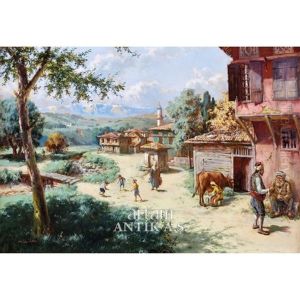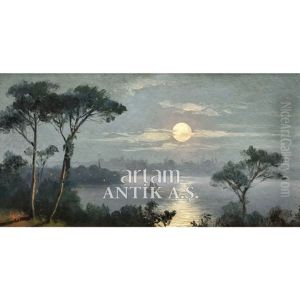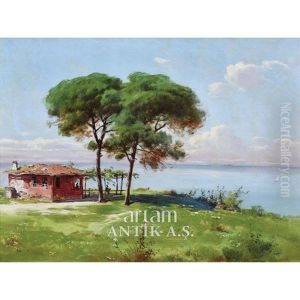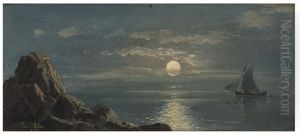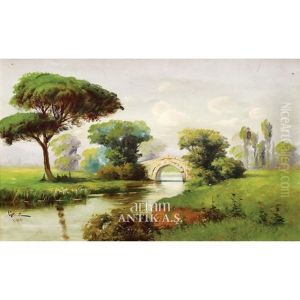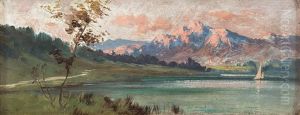Hoca Ali Riza Paintings
Hoca Ali Riza was an Ottoman painter known for his watercolor works, especially his landscape paintings. Born in Üsküdar, Istanbul, in 1858, he grew up during a period when the Ottoman Empire was undergoing significant cultural and political changes. His interest in art began at a young age, and he was known to have been influenced by the prevailing artistic trends of the 19th century, particularly by the Orientalist perspective that characterized much of the art in the Ottoman world during this period.
Riza initially pursued a military career, attending the Kuleli Military High School and then the Military Academy, where he honed his skills in cartography. His expertise in drawing and map-making would later inform his artistic techniques. After serving in the army, he transitioned to teaching, becoming an instructor in drawing at the Military Academy. This position allowed him to continue practicing and refining his artistic skills.
Throughout his life, Hoca Ali Riza remained deeply connected to Istanbul, and the city served as a primary inspiration for his work. His landscapes capture the essence of Istanbul's neighborhoods, the Bosphorus shores, and the daily life of its inhabitants with a keen eye for detail and atmosphere. His works are characterized by their delicate play of light and shadow, a testament to his mastery of watercolor. Despite his focus on Istanbul, he also painted landscapes from other regions of the Ottoman Empire, documenting the varied geography and architecture of the empire.
Riza's work gained recognition during his lifetime, and he participated in several exhibitions, both in the Ottoman Empire and abroad. His paintings not only appealed to art collectors but also served as historical records of an era and a city that were rapidly transforming.
After the establishment of the Republic of Turkey, Hoca Ali Riza continued to paint, but his style remained rooted in the traditions of the late Ottoman period. He passed away in 1930, leaving behind a rich legacy of work that provides valuable insights into the Ottoman Empire's cultural history and the transition into the modern Turkish Republic. His paintings are now considered important cultural artifacts and are held in various collections, including the Istanbul Painting and Sculpture Museum.
